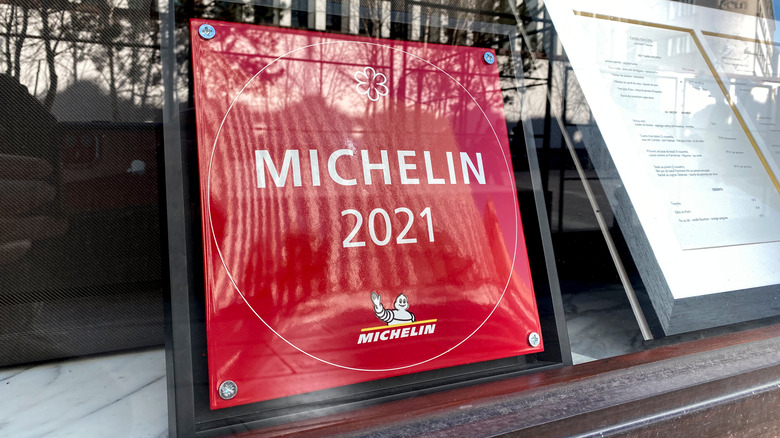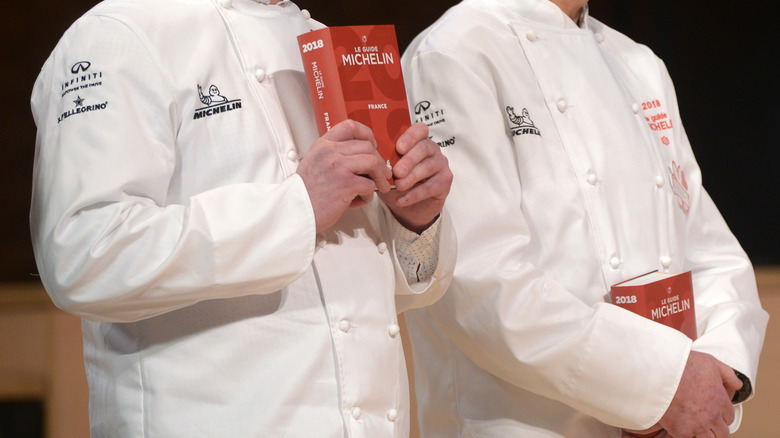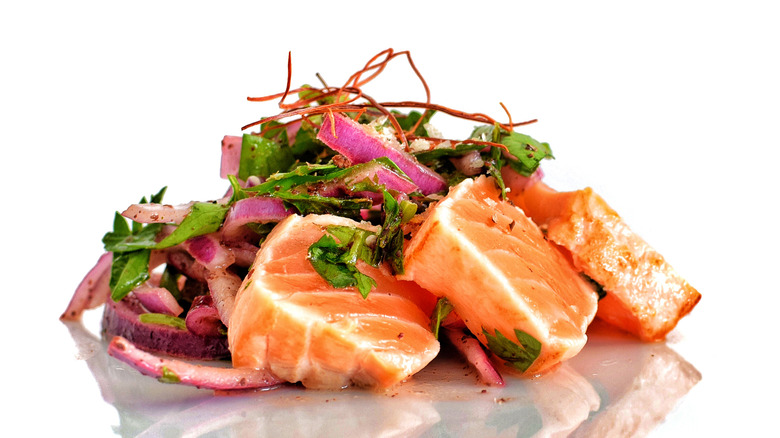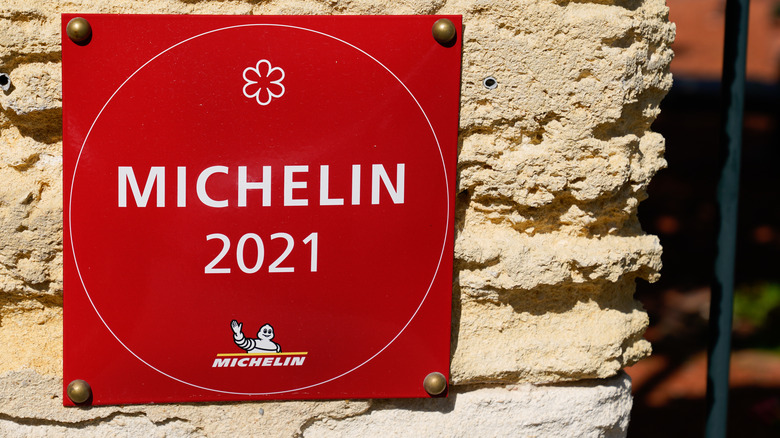People Are Pointing Out This Big Problem With The 2021 Michelin Guide
While it's the season for all things autumnal, spooky and, of course, the new Mountain Dew VooDEW Mystery Flavor, it's also a special and highly anticipated time of year. That's because the Michelin guide has released its awards for 2021, making a return after nearly everything restaurant-related was shut down last year due to the COVID-19 pandemic.
While chefs, restaurateurs, and food-lovers alike wait patiently each year for the announcements of which establishments has earned a star (or two, or three), this year is shaping up to be rather underwhelming. Though the entire U.S. restaurant industry has seen a massive shift as a result of COVID-19 (via Forbes), this year's Michelin awards seemed to glaze over the phenomenon and continue business as usual, thus remaining fairly predictable and somewhat disappointing in its decisions. So, when you look over the full guide of this year's awards, don't get your hopes up for a lot of new, exciting, or diverse winners.
How the Michelin guide works and why it's skewed
For those unfamiliar with how the rating system works, undercover "Michelin Inspectors" (who are trained in France) visit restaurants in various cities, possibly several times, to sample the cuisine and establish ratings based on the quality, flavor, and presentation (via Fine Dining Lovers). Ambience and décor are not taken into account, as the ratings are strictly based on the food, although there is an additional award, the "Bib Gourmand," for restaurants offering great food at great prices.
However, it's no secret that, in the past, the Michelin guide has been somewhat of a letdown, saving many of its coveted stars for the upscale and predominantly white and/or male-run restaurants. Of course, since its inception in 1900, the guide has definitely made some adjustments as far as inclusion goes — but it's still not exactly up to par with today's social climate (via Escoffier).
Eater recently released an overview of all the stars awarded this year, accompanied by some commentary on where the guide went wrong or right. "True to form, the theme of the 2021 Michelin guide selections stuck to mostly Eurocentric and Japanese selections, leaving out major swaths of the U.S. culinary landscape ... It seems that no matter what year the guide is released, inspectors are still playing by the same book."
What the Michelin guide got wrong in 2021
What many people and publications are pointing out is that this year's guide took all the safest bets when it came to handing out ratings, aiming to be "as non-controversial as possible." No new restaurants made it to the highly renowned three-star category (or the two-star category, for that matter), and certain establishments that already held high ratings, but either remained closed for most of the pandemic or changed menus, simply kept their previous stars.
As Ryan Sutton of Eater New York puts it, "Michelin continues to believe the city's thriving restaurants serving Indian, Chinese, modern Vietnamese, Thai, pizza, barbecue, or deli fare are better suited for the so-called Bib Gourmand consolation prize ... As the larger food world tries to change in myriad and complex ways, Michelin is here to stay the same, putting out a list of starred selections that remain a poor representation of where New Yorkers are eating right now."
The Michelin guide got it wrong for pretty much every major city in 2021
A separate Eater article also focuses on the lack of representation of good food in Los Angeles, where many popular restaurants — including those selling street food or who are not boasting predominantly European or Western-centric menus — didn't even get a mention. "Michelin has never really cared about representing local food culture, only seeing which places fit into its own constructs of good food," which is largely based on outdated and non-diverse fine-dining standards. It's a cause for wonder about who the Michelin Inspectors really are, their food backgrounds, and if there's enough diversity happening behind the scenes.
All in all, there just weren't many surprises in this year's guide, though it still provided some excitement for certain cities and regions. California continues to dominate the competition with the addition of a thriving Bay Area restaurant scene as decided by the Michelin Inspectors (via SFGate). And who knows, maybe 2022 will be the year local food, diversity, and budget-friendliness is finally celebrated by the folks at Michelin. Only another 365 days.



